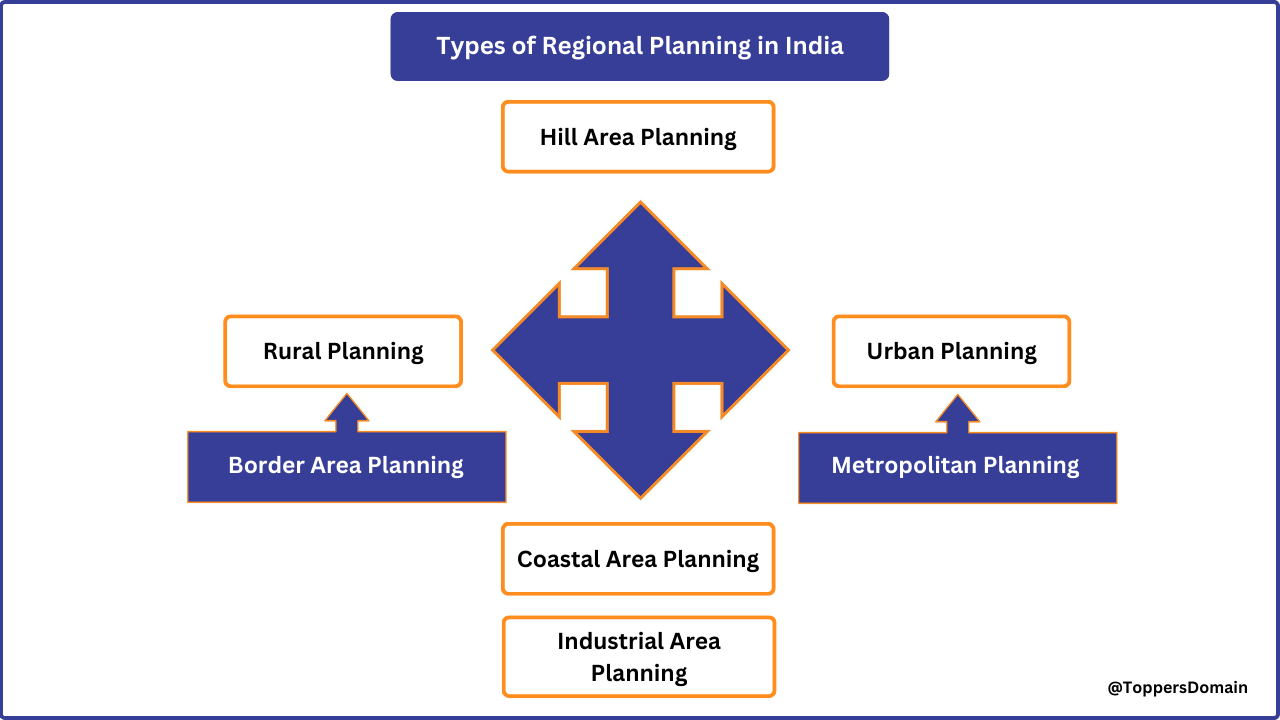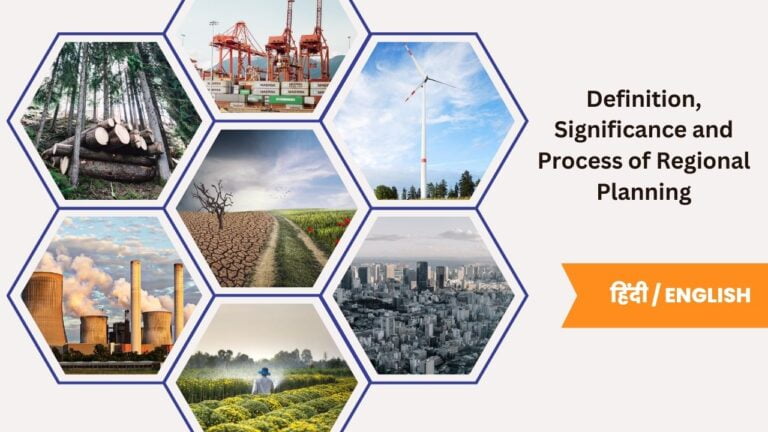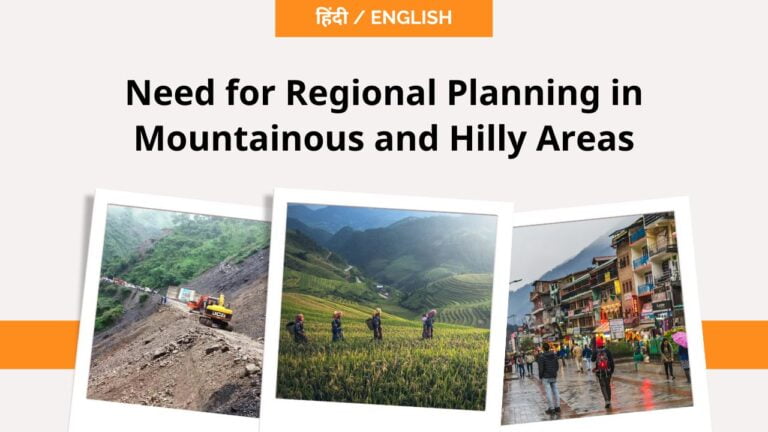Types of Regional Planning in India
Regional Planning & Development
Index
Introduction
Regional planning refers to a systematic approach to managing and directing the physical, social and economic development of a specific region. It involves analysing the existing resources, identifying potential growth areas and formulating strategies to achieve balanced and sustainable development. In context of a diverse and populous nation like India, regional planning becomes even more significant. It becomes of paramount importance due to its vast geographical and cultural diversity. The process of regional planning helps address regional disparities, promote equitable growth and optimize resource allocation.
Types of Regional Planning in India
Regional planning in India encompasses various types of planning approaches aimed at promoting balanced and sustainable development across different regions of the country.
Here are some of the important regional planning innitiatives India:
Metropolitan Planning
Metropolitan planning is the most ambitious form of regional planning. It is focused on the development and management of large urban areas. Metropolitan planning is basically needed to address the challenges of rapid urbanization, population growth and infrastructure requirements. Metropolitan planning aims to create a sustainable and inclusive urban environment by improving infrastructure related to transport, housing and the environment. A prime example of metropolitan planning in India is the Mumbai Metropolitan Region Development Authority (MMRDA). Its strategies included the development of integrated transportation systems, affordable housing schemes and environmental protection initiatives.
Rural Planning
Rural planning aims to enhance the quality of life in rural areas by addressing their unique needs and challenges. It involves the improvement of basic amenities, agricultural development, employment generation and poverty alleviation. The Integrated Rural Development Program (IRDP) is a significant initiative in this domain. IRDP focuses on empowering rural communities through skill development, infrastructure creation and the promotion of micro-enterprises. Its objectives include poverty alleviation, productivity enhancement in agriculture and social welfare programs.
Urban Planning
Urban planning focuses on managing and developing urban areas to ensure sustainable growth and improve the quality of life for urban residents. The Jawaharlal Nehru National Urban Renewal Mission (JNNURM) is a prominent urban planning initiative in India. JNNURM aims to create economically productive, efficient, equitable and sustainable cities. Its strategies include urban infrastructure development, affordable housing schemes and governance reforms to promote better urban management.
Coastal Area Planning
Coastal area planning aims to safeguard the ecological balance and promote sustainable development along coastal regions. The Integrated Coastal Zone Management (ICZM) program focuses on conserving coastal ecosystems, managing coastal resources and improving the livelihoods of coastal communities. It involves measures such as coastal erosion control, marine biodiversity conservation and sustainable tourism development.
Hill Area Planning
Hill area planning focuses on addressing the unique challenges and opportunities presented by hilly terrains. The Himachal Pradesh Urban Planning and Development Authority (HIMUDA) is responsible for planning and development in hilly areas of the state. HIMUDA aims to ensure sustainable urban growth, preserve natural resources and promote tourism. Their strategies include hill slope stabilization, water resource management and infrastructure development in hilly regions.
Industrial Area Planning
Industrial area planning aims to promote industrial growth while ensuring environmental sustainability and the well-being of local communities. Special Economic Zones (SEZs) are an important aspect of industrial area planning in India. SEZs are designated areas with favourable policies and infrastructure to attract investments and boost exports. They contribute to job creation, technology transfer and economic development.
Border Area Planning
Border area planning focuses on the development and security of regions located along the international borders. The Border Area Development Program (BADP) aims to improve the living conditions of people in border areas and enhance their economic opportunities. It includes infrastructure development, skill enhancement programs and social welfare initiatives to address the specific needs of border communities.
Challenges and Future Prospects
Despite the various types of regional planning initiatives in India, there are common challenges that need to be addressed. These include inadequate infrastructure, inadequate funding, bureaucratic hurdles and coordination issues between different levels of government. To overcome these challenges, technology and data-driven approaches can play a crucial role. By utilizing advanced analytics, geographic information systems (GIS) and smart city technologies, planners can make informed decisions and optimize resource allocation.
Moreover, integrating sustainable development practices is essential for long-term regional planning. This involves considering environmental impacts, promoting renewable energy sources and adopting eco-friendly infrastructure designs. Additionally, effective collaboration between different levels of government, stakeholders, and communities is vital to ensure inclusive and participatory regional planning processes.
Conclusion :
Regional planning is a fundamental aspect of achieving balanced and sustainable development in India. The various types of regional planning initiatives, such as metropolitan planning, rural planning, urban planning, coastal area planning, hill area planning, industrial area planning, and border area planning, address the specific needs and challenges of different regions. By implementing comprehensive strategies and promoting collaboration, India can foster equitable development, preserve natural resources, and improve the quality of life for its citizens.
Share
Other Topics
Unit - I




